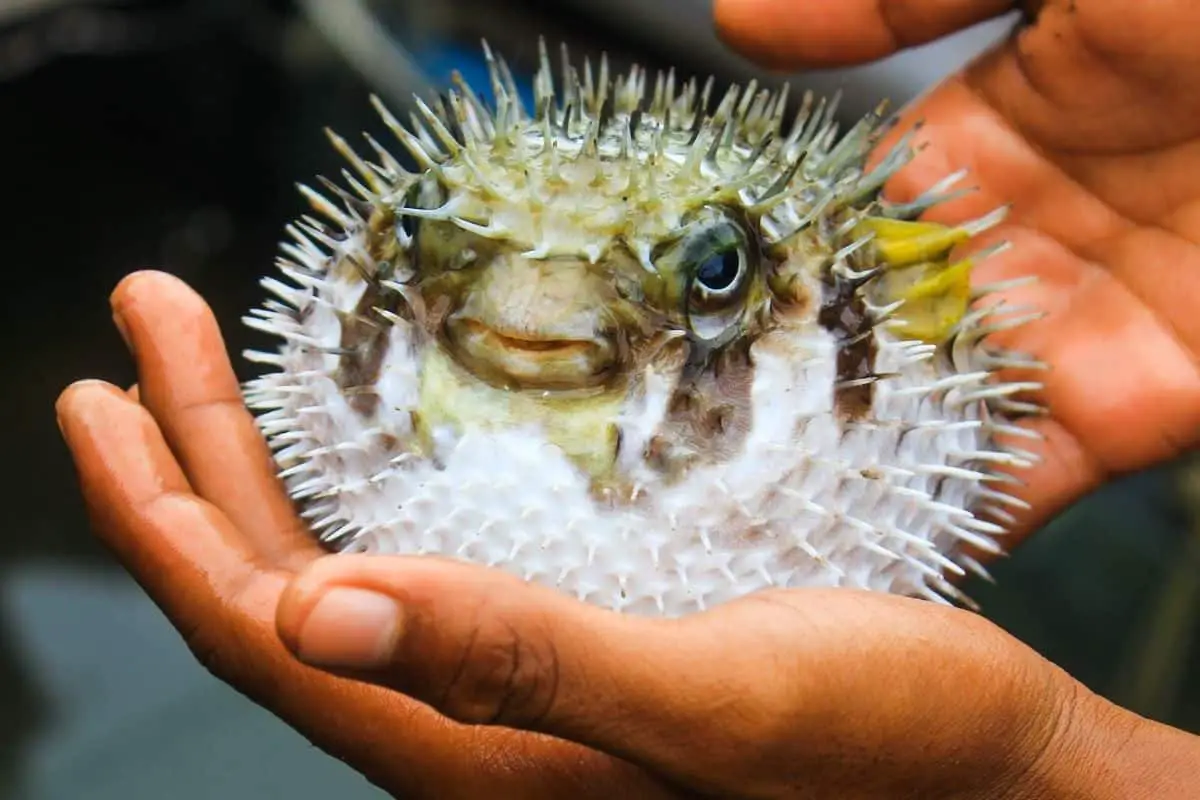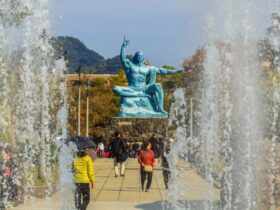In a 2017 visit to Tokyo, I was doing the normal touristy things and made my way to the Tsukiji Outer Market before it moved in October of 2018 to its new location at Toyosu and renamed the Toyosu Market. A very well-known fish market selling thousands of varieties of extremely fresh fish. I wandered into an area off the main walkway and there it was. I had heard about it my entire life but never have I came face to face with it. FUGU!
It was so thinly sliced it was nearly transparent as it is often served sashimi style on a plate and commonly served with a lime wedge, sometimes with sour pickled plum.
Fugu is a type of pufferfish often eaten in Japan, Sashimi style (uncooked), and is considered a delicacy. The fish can only be safely Eaten once certain internal organs are removed that are highly toxic to humans.
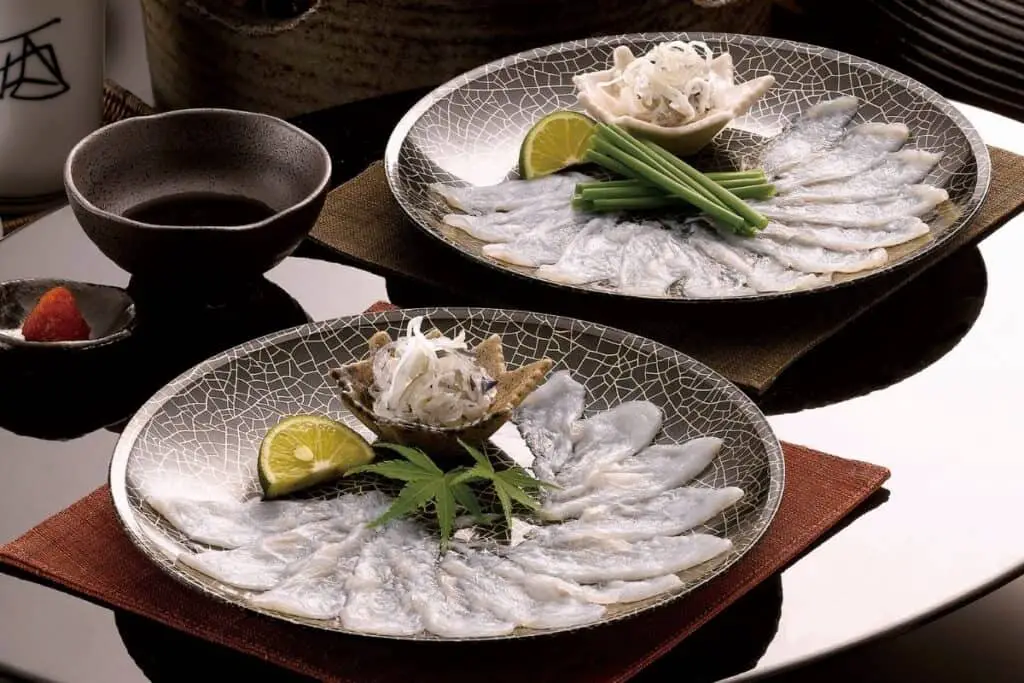
Everyone has the same question about eating Fugu. Has anyone actually died from eating it?
On average in Japan, three people die from eating the toxic parts of Fugu or the pufferfish. Most of those are Japanese fishermen who attempt to each their catch not knowing how to properly remove the most toxic organs such as the liver.
For the adventurous or foolish foodie, I suppose the next question would be obvious.
How much does it cost to eat Fugu in Japan?
On average, eating Fugu or pufferfish in an upscale restaurant in Japan will cost about $100 to $300. In other restaurants, the delicacy can be found at a much lower cost. Perhaps $30 to $40
I however am neither a die-hard foodie nor foolish enough to chance to eat the potentially deadly meal. I do enjoy my sashimi on a weekly basis.
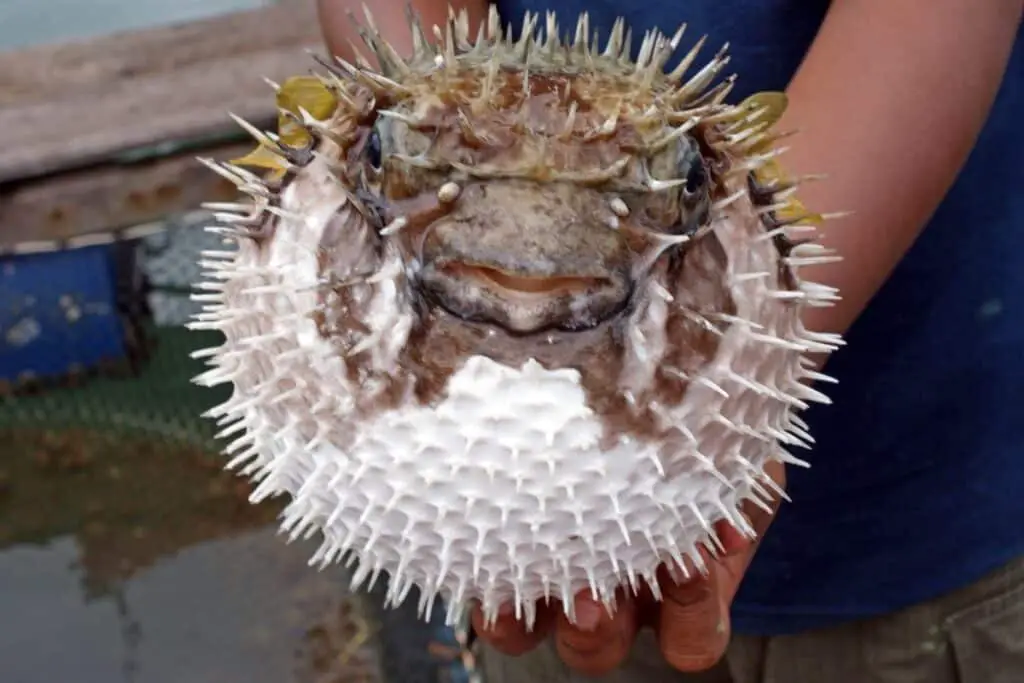
So can you survive if you eat the toxic part of a pufferfish or fugu?
Without direct medical intervention, chances of surviving the toxins of pufferfish are very low. Up to sixty percent of those who consume the poison will die from it. Generally, you have less than an hour if you eat the toxic portion.
Is it safe to eat fugu in Japan?
Fugu Chefs are highly trained on how to remove the toxic parts of the fish which include the liver and the skin. Each Japanese chef must receive specialized training and be certified by Japan’s government.
How do you become a chef that prepares Fugu?
The training program requires an apprenticeship of up to three years and must also pass a written examination, demonstrating the ability to prepare it safely.
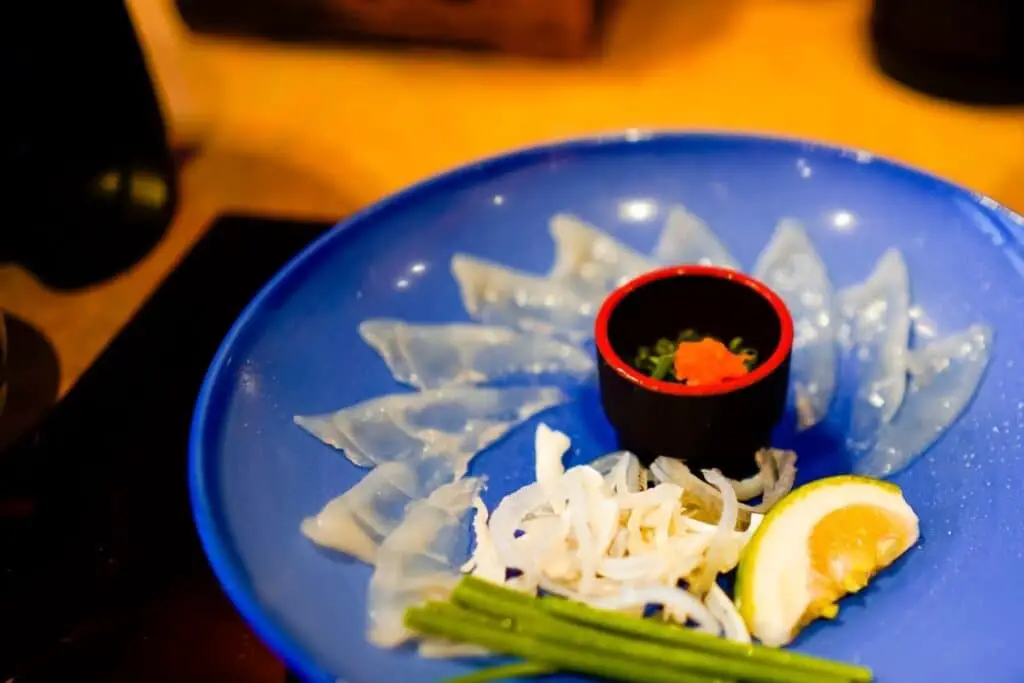
Although I admire the ability of the highly trained chefs that prepare Fugu dishes and the beauty in which they display it on the plate I couldn’t bring myself to try it even though I wondered what does it taste like?
I have been told by those who have taken their lives into their own chopsticks that…
The Taste of fugu is very subtle, not fishy, but similar to a miso soup and slightly sweet. Also, it is said that it is somewhat chewy.
So the big question about taking a chance and possibly having your last meal in Tokyo. Has any of those patrons died from eating in a restaurant by a certified bonified fugu master?
Over the past thirty years, only one person has been known to have died after eating fugu in a Japanese restaurant inside Japan. The majority of deaths happened by people who caught and consumed the pufferfish themselves.
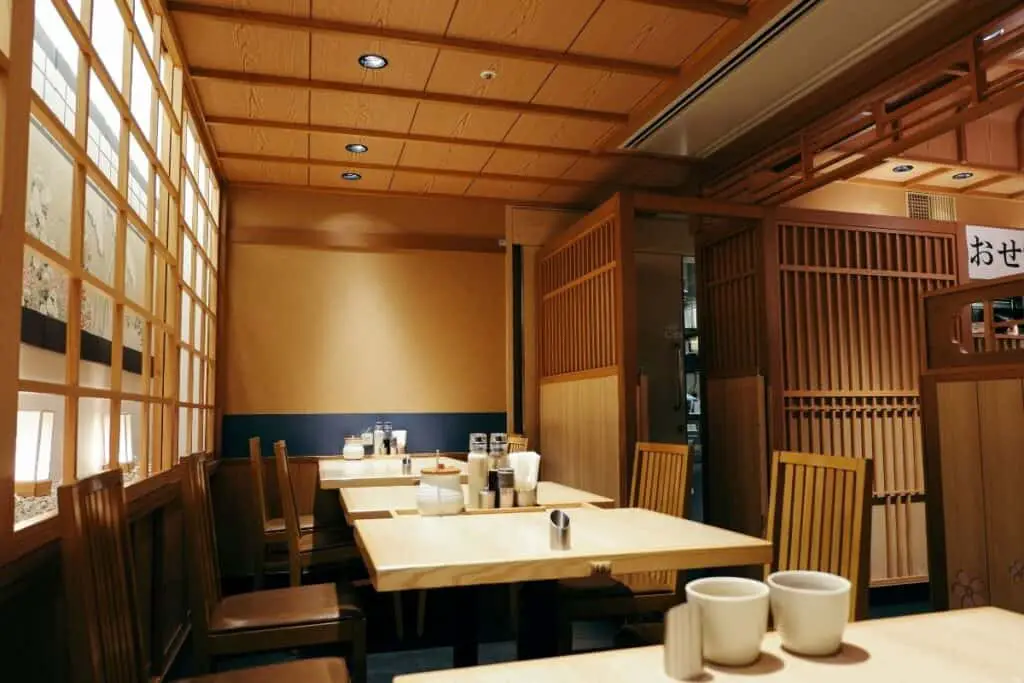
Everyone must think for such a huge responsibility those fugu chefs must be raking in the big bucks. I thought the same thing. Three years of training. Government certification and a restaurant of patrons filled with their very lives depending on your steady knife skills. I was a little surprised and the financial compensation for those hard-working individuals.
The average salary of sushi chefs in Japan is between $25-$45K annually. A sushi chef must also be certified by the Japanese government to prepare fugu.
As a general rule, a sushi chef in Japan can make sushi but not necessarily make fugu. A certified fugu chef can also make sushi.
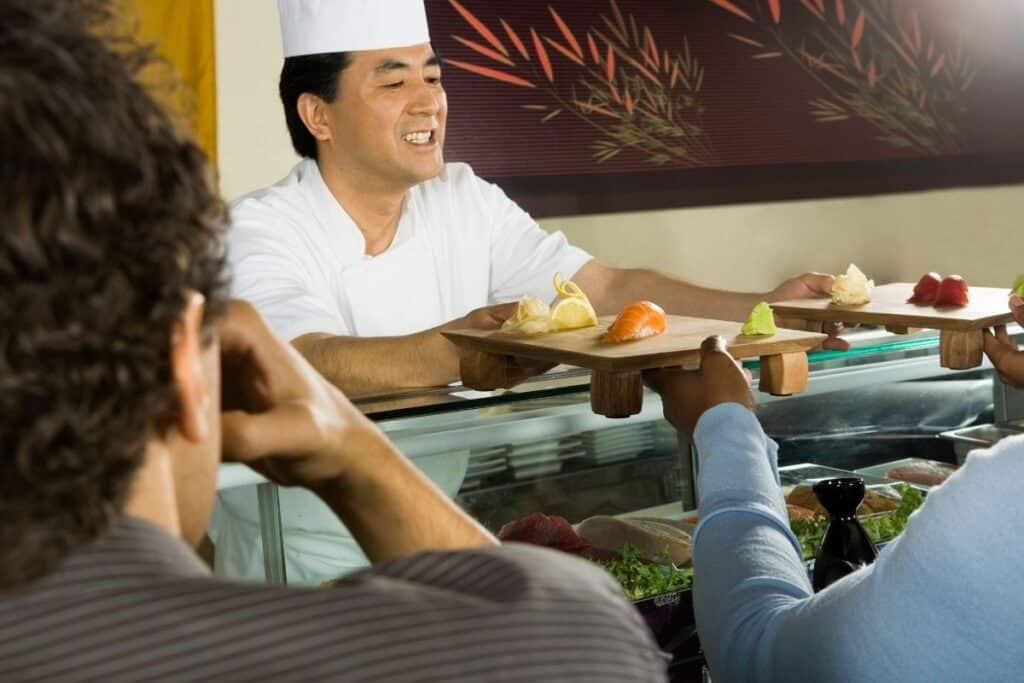
Many people wonder what happens to the chef if their customers die after eating fugu?
As a general rule if a customer dies after eating fugu in Japan the chef will most likely lose his license from the government and may face punishment from the local legal system.
My own personal feeling is mixed about the consumption of fugu. To me, it’s similar to cigarettes. We all know the risk and eventually, chances are your going to have some type of health issue. With fugu, not every foreigner knows what risk they are taking. Perhaps the risk is very low since hundreds of thousands of Japanese citizens eat the dish each year and over of period of three decades, there has only been one fatality at a restaurant that is certified by the local prefecture to prepare it. I suppose as long as you know that in fact there is a tiny risk however small, maybe the fugu is much safer than a pack of Marlboros.
As I was sitting here writing this late into the night and my wife already long asleep, my mind wandered thinking about the deadly fugu. I realized that the alleyway where I wandered into the fugu display in Tokyo was not in fact the first time I had ever seen fugu.
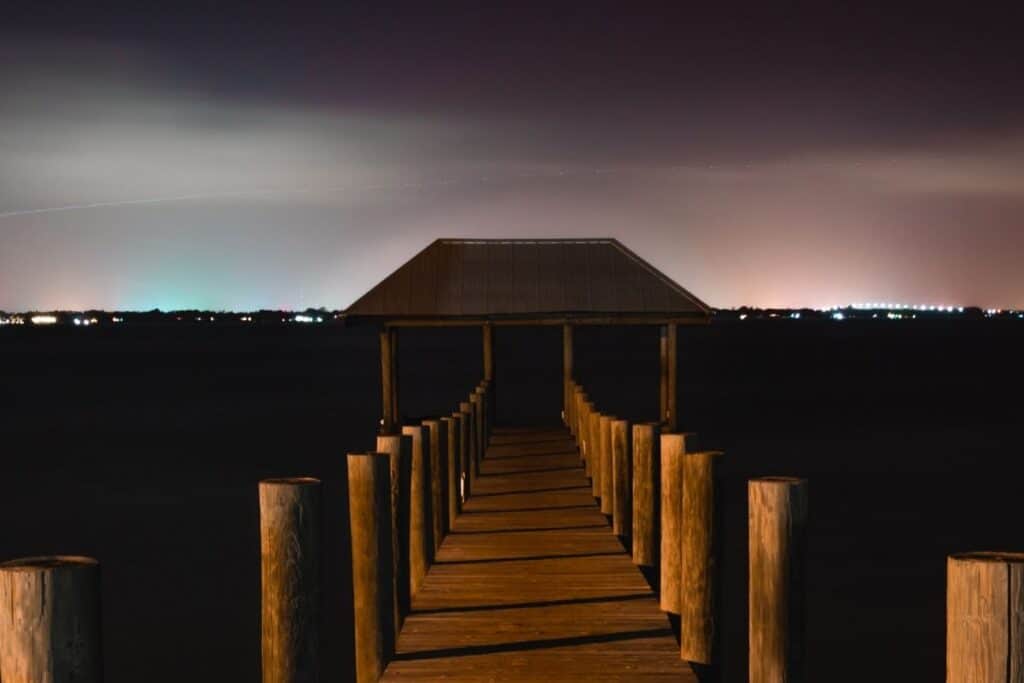
Decades earlier at a rickety wooden dock somewhere in the panhandle of Florida two young boys and their father and uncle fished under a cone of light late one summer evening and my line caught something and quickly I pulled it out of the water. It was indeed the elusive pufferfish. My dad quickly got him off the line and sent him on his way. I faintly remember dad saying…I think that was a porcupine fish and I think they are poisonous.
I don’t think dad knew how right he was…
A fish gets bigger when it gets away
Japanese proverb

